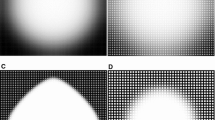Abstract
Modern microsystem application is concentrated on the development of microstructured sensors and actuators in integrated devices. Examples of that approach are microoptical components for endoscopic surgery, sensors and micropumps in integrated liquid analysers for pollution measurements.
Often microsystems replace normal systems like commercially available piston pumps by silicon made liquid pumps in the hope of reducing costs but there is a lack of finding new applications.
In contrast our approach of combining special developed microcompartments constructed with transparent membranes or microsieves and microdosing systems based on the ink jet principle together with optical devices like CCD cameras allow to overcome a real bottleneck in the new field of evolutionary biotechnology, the problem of screening a huge number of samples at a reasonable price.
The goal of this approach is to design new molecules like enzymes by means of Darwinian evolution i.e. mutation and selection. In applying the selection principle to self amplifying entities like cell populations, viruses or self-replicating molecules under controlled selection pressures there is an absolute need to process large numbers of these entities in parallel. Preferentially this can be done in arrays of different microstructured compartments. The selection process is designed that it leads to products which are optimized in regard of specific applications. Within the scope of this approach chemical products are deterministically synthesized in spatially adressable compartments by multihead microdrop systems.
Similar content being viewed by others
References
Beaudry, A.A.;G.F. Joyce: 1992. Directed evolution of an RNA enzyme. Science 257: 635–641
Döhring, M.: 1991. Flüssigkeiten mikrofein dosieren. F und M: Feinwerktechnik und Messtechnik. Zeitschrift für Elektronik, Optik und Feinmechanik in Feingerätebau und Messtechnik. 99 no 11: 459–463
Eigen, M.;W.C. Gardiner, Jr.: 1984. Evolutionary molecular engineering based on RNA replication. Pure and Appl. Chem. 56 No. 8: 967–978
Eigen, M.: 1986. The physics of macromolecular evolution. Chemica Scripta 26B: 13–26
Eigen M.: 1990. Report on evolution research. Max-Planck-Institut für biophysikalische Chemie, Göttingen pp 48–49
Eigen, M.;Rudolf Riegler: 1994. Sorting single molecules. Application to diagnostics and evolutionary biotechnology. Proc. Natl. Acad. Sci. USA Vol. 91, pp 5740–5747
Ellington, A.D.;J.W. Szostak: 1992. Selection in vitro of single-stranded DNA molecules that fold into specific ligand-binding structures. Nature 355: 850–852
Fodor, S.P.A.; Read, J.L.; Pirrung, M.C.; Stryer, L.; Lu, A.T.; Solas, D.: 1991. Light-Directed, Spatially Addressable Parallel Chemical Synthesis. Science 767–773
Goldberg, D.E.: 1989. Genetic algorithms Addison-Wesley Publishing Company, Inc
Köhler, J.M.;Ritzel, O.;Brodkorb, W.;Dietrich, P.: 1991. Exp. Techn. Phys. 39, 3–227
Kramer, F.R.; Mills, D.R.; Cole, P.E.; Nishihara, T.; Spiegelman, S.: 1974. Evolution in vitro: Sequence and phenotype of a mutant RNA resistant to ethidium bromide
Rigler, R.;Metz, Ü.;Widengren, J.;Kask, P.: 1993. Fluorescence correlation spectroscopy with high count rate and low back-ground: analysis of translational diffusion. EUR Biophys J 22: 169–175
Schober, A.;Günther, R.;Schwienhorst, A.;Döring, M.;Lindemann, B.F.: 1993. Accurate high speed liquid handling of very small biological samples. Biotechniques. Vol. 15, no. 2: 324–329
Schober, A.;Thürk, M.;Eigen, M.: 1993. Optimization by hierarchical mutant production. Biol. Cybernetics. 1993. 69: 493–501
Tuerk, C.;Gold, L.: 1990. Systematic evolution of ligands by exponential enrichment: RNA ligands to bacteriophage T4 DNA polymerase. Science 249: 505–510
Wright, W.E.;Binder, M.;Funk, W.: 1991. Cyclic amplification and selection of targets (CASTing) for the myogenin consensus binding site. Mol. Cell. Biol. 11: 4104–4110
Author information
Authors and Affiliations
Additional information
This work was supported financially by the Bundesministerium für Bildung, Wissenschaft Forschung und Technologie (FKZ 0310717 and FKZ 0310701).
Rights and permissions
About this article
Cite this article
Schober, A., Schwienhorst, A., Köhler, J.M. et al. Microsystems for independent parallel chemical and biological processing. Microsystem Technologies 1, 168–172 (1995). https://doi.org/10.1007/BF01371490
Received:
Accepted:
Issue Date:
DOI: https://doi.org/10.1007/BF01371490




